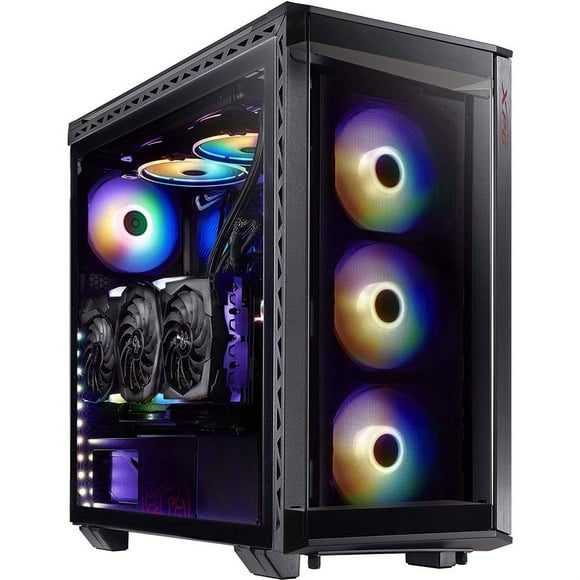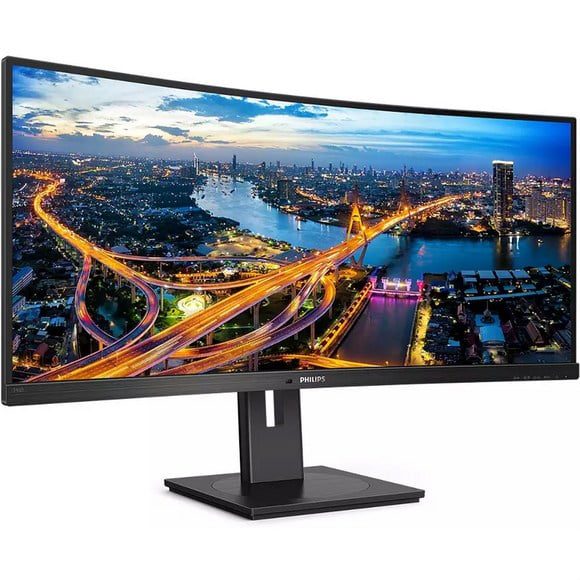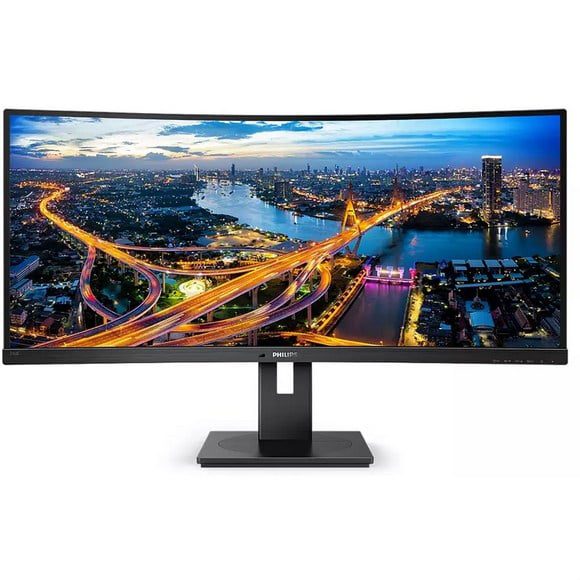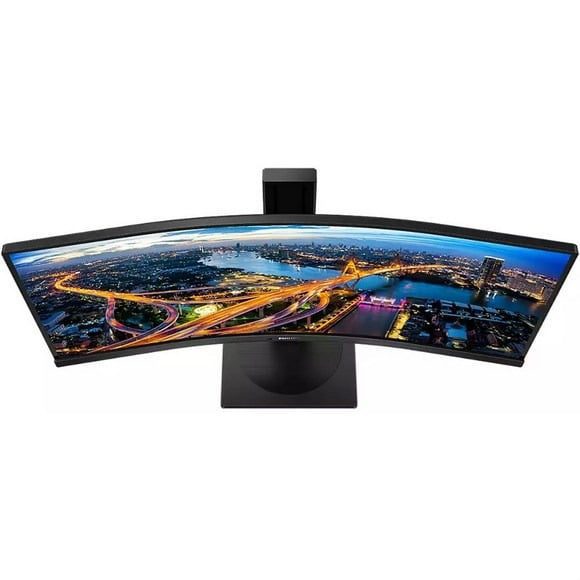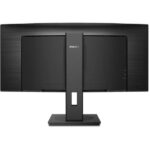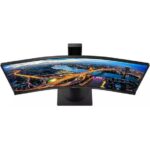Philips 346B1C 34″ Curved UltraWide WQHD LCD Monitor with USB-C Adaptive sync Price in Pakistan
| Brand
Name of the company-manufacturer. |
Philips |
| Series
Name of the series, which the model belongs to. |
B-Line |
| Model
Designation of the model. |
346B1C |
| Model alias
Other known designations of the model. |
346B1 346B1C/00 |
| Model year
The year in which this model was announced. |
2019 |
Display
Information about the main characteristics of the display – panel, backlight, resolution, refresh rate, etc.
| Size class
Size class of the display as declared by the manufacturer. Often this is the rounded value of the actual size of the diagonal in inches. |
34 in (inches) |
| Diagonal
Approximate diagonal size of the display. If the manufacturer does not provide such information, the diagonal is calculated from the width and height of the screen. |
863.6 mm (millimeters) 86.36 cm (centimeters) 34 in (inches) 2.8333 ft (feet) |
| Width
Approximate width of the display. If the manufacturer does not provide such information, the width is calculated from the diagonal and the aspect ratio. |
799.8 mm (millimeters) 79.98 cm (centimeters) 31.4882 in (inches) 2.624 ft (feet) |
| Height
Approximate height of the display. If the manufacturer does not provide such information, the height is calculated from the diagonal and the aspect ratio. |
334.8 mm (millimeters) 33.48 cm (centimeters) 13.1811 in (inches) 1.0984 ft (feet) |
| Radius of curvature
There are curved displays, whose curve is part of a circumference (arc). In order to give more precise information about the curve of the screen, often the manufacturer provides data about the radius of this circumference. The smaller the radius, the larger the screen curve. |
1500 mm (millimeters) 150 cm (centimeters) 59.0551 in (inches) 4.9213 ft (feet) |
| Panel manufacturer
Name of the manufacturer of the display panel. |
TP Vision |
| Panel model
Information about the model of the panel used. |
TPM340YP05 |
| Panel type
There are various panel technologies. Each has its own specific features – viewing angles, color reproduction, response time, brightness/contrast, production cost, etc. The image quality depends directly on the type of the display panel used. |
SVA |
| Panel bit depth
The most widely used panels are those with 6, 8, and 10 bits for each of the RGB components of the pixel. They provide 18-, 24-, and 30-bit color, respectively. |
8 bits |
| FRC
Frame Rate Control (FRC) is a method, which allows the pixels to show more color tones. With quick cyclic switching between different color tones, an illusion for a new intermediate color tone is created. For example, by using FRC, a 6-bit display panel is able to show 16.7 millioin colors, which are typical for 8-bit display panels, and not the standard 262200 colors, instead. There are different FRC algorithms. |
No |
| Colors
The maximum number of colors, which the display is able to reproduce, depends on the type of the panel in use and color enhancing technologies like FRC. |
16777216 colors 24 bits |
| Aspect ratio
The ratio between the horizontal and the vertical side of the display. Some of the standard and widely used aspect ratios are 4:3, 5:4, 16:9 and 16:10. |
2.389:1 |
| Resolution
Information about the number of pixels on the horizontal and vertical side of the screen. A higher resolution allows the display of a more detailed and of higher quality image. |
3440 x 1440 pixels |
| Pixel pitch
The pixel pitch shows the distance from the centers of two neighboring pixels. In displays, which have a native resolution (the TFT ones, for example), the pixel pitch depends on the resolution and the size of the screen. |
0.232 mm (millimeters) 0.0232 cm (centimeters) 0.0091 in (inches) 0.0008 ft (feet) |
| Pixel density
Information of the number of pixels in a unit of length. With the decrease of the display size and the increase of its resolution, the pixel density increases. |
109 ppi (pixels per inch) 43 ppcm (pixels per centimeter) |
| Display area
The percentage of the approximate area, taken by the active part of the screen, to the total front area. |
90.41 % (percent) |
| Backlight
The backlight is the source of light of the LCD display panels. The type of backlight determines the image quality and the color space of the display. There are various backlights such as CCFL, LED, WLED, RGB-LED, and etc. |
W-LED |
| sRGB
sRGB is a color space, developed jointly by Hewlett-Packard and Microsoft in 1996. It is used in different devices such as printers, displays, TV sets, cameras, etc. The sRGB color space covers about 72% of the NTSC color space. |
119 % (percent) |
| Adobe RGB (1998)
Adobe RGB (1998) is a color space, developed by Adobe Systems in 1998. It has a wider gamut than the sRGB (mainly in the cyan-green range of colors) and is widely used in professional printing. |
90 % (percent) |
| NTSC (1953)
The NTSC (1953) color space is introduced in 1953 by the FCC with the appearance of color television and has a wider gamut than the sRGB. |
100 % (percent) |
| DCI P3
DCI P3 is a color space, introduced in 2007 by the SMPTE. It is used in digital cinema and has a much wider gamut than the sRGB. |
88 % (percent) |
| Brightness
Information about the brightness of the screen. It is measured in candela per square metre (cd/m²). |
300 cd/m² (candela per square meter) |
| Static contrast
The static contrast shows the ratio between the brightest and the darkest color, which the display can reproduce simultaneously, for example, within one and the same frame/scene. |
3000 : 1 |
| Dynamic contrast
The dynamic contrast shows the ratio between the brightest and the darkest color, which the display can reproduce over time, for example, in the course of playing a video. |
80000000 : 1 |
| Horizontal viewing angle
Information about the maximum horizontal viewing angle, within which the image on the screen is of acceptable quality. |
178 ° (degrees) |
| Vertical viewing angle
Information about the maximum vertical viewing angle, within which the image on the screen is of acceptable quality. |
178 ° (degrees) |
| Minimum response time
Information about the minimum amount of time, in which the pixels change from one color to another. Very often the manufacturer provides the response time for transition from grey-to-grey (G2G). |
5 ms (milliseconds) 0.0050 s (seconds) |
| Input lag
Desktop monitors and smart TVs experience a latency/lag in visualizing the information. The time in milliseconds that the display needs to visualize the signal input. |
8 ms (milliseconds) 0.0080 s (seconds) |
| Coating
Information about the type of coating of the display. There are different types of matte and glossy coatings, each of which has its own advantages and drawbacks. |
Anti-glare/Matte (2H) |
Frequencies
Information about the horizontal and vertical refresh rates/frequencies.
| Horizontal frequency (digital)
The horizontal scan rate/frequency shows the number of horizontal lines, displayed by the monitor per second, when it is plugged to a digital source. |
30 kHz – 160 kHz (kilohertz) |
| Vertical frequency (digital)
The vertical frequency/refresh rate shows how many times in a second the image on the screen is refreshed. |
48 Hz – 100 Hz (hertz) |
Power supply and consumption
Information about the power supply and consumption, energy efficiency class, etc.
| 110V
Permissible voltage tolerance in a 110-volt electric system. |
100 V – 120 V (volts) |
| 220V
Permissible voltage tolerance in a 220-volt electric system. |
220 V – 240 V (volts) |
| Alternating current frequency
Requirement regarding the alternating current frequency in the electric system. |
50 Hz – 60 Hz (hertz) |
| Power consumption (sleep)
Power consumption in sleep/stand by/suspend mode. |
0.3 W (watts) |
| Power consumption (eco)
Average power consumption in economy mode. |
34 W (watts) |
| Power consumption (average)
Average power consumption in standard work mode. |
46.8 W (watts) |
| Power consumption (annual)
Estimated power consumption per year in kWh. |
104 kWh (kilowatt-hours) |
| Energy efficiency class
The energy efficiency class/label provides general idea about the power consumption. There are different energy efficiency classes and each sets its own requirements regarding the power consumption. Some of the existent energy efficiency classes are A+++, A++, A+, A, B, C, D, E, F, G. |
B |
Dimensions, weight and color
Information about the dimensions and the weight of the specific model with and without stand as well as the colors, in which it is offered to the market.
| Width
Width without stand in different measurement units. |
807 mm (millimeters) 80.7 cm (centimeters) 31.7717 in (inches) 2.6476 ft (feet) |
| Height
Height without stand in different measurement units. |
367 mm (millimeters) 36.7 cm (centimeters) 14.4488 in (inches) 1.2041 ft (feet) |
| Depth
Depth without stand in different measurement units. |
110 mm (millimeters) 11 cm (centimeters) 4.3307 in (inches) 0.3609 ft (feet) |
| Weight
Weight without stand in different measurement units. |
7.79 kg (kilograms) 17.17 lbs (pounds) |
| Width with stand
Width with stand in different measurement units. |
807 mm (millimeters) 80.7 cm (centimeters) 31.7717 in (inches) 2.6476 ft (feet) |
| Height with stand
Height with stand in different measurement units. |
601 mm (millimeters) 60.1 cm (centimeters) 23.6614 in (inches) 1.9718 ft (feet) |
| Depth with stand
Depth with stand in different measurement units. |
250 mm (millimeters) 25 cm (centimeters) 9.8425 in (inches) 0.8202 ft (feet) |
| Weight with stand
Weight with stand in different measurement units. |
11.49 kg (kilograms) 25.33 lbs (pounds) |
| Box width
Width of the package in different measurement units. |
930 mm (millimeters) 93 cm (centimeters) 36.6142 in (inches) 3.0512 ft (feet) |
| Box height
Height of the package in different measurement units. |
525 mm (millimeters) 52.5 cm (centimeters) 20.6693 in (inches) 1.7224 ft (feet) |
| Box depth
Depth of the package in different measurement units. |
282 mm (millimeters) 28.2 cm (centimeters) 11.1024 in (inches) 0.9252 ft (feet) |
| Box weight
Weight of the product with all accessories and packaging in different measurement units. |
15.32 kg (kilograms) 33.77 lbs (pounds) |
| Colors
Information about the colors, in which the specific model is offered to the market. |
Black |
Ergonomics
Information about the ergonomic functions – height adjustment, swivel angles, tilt angles, etc.
| VESA mount
Information about whether there is a possibility for wall mounting according to the VESA Mounting Interface Standard (MIS). |
Yes |
| VESA interface
There are many various interfaces under the VESA standard, which differ in the size of the brackets, the distances between the screw holes and their number. |
100 x 100 mm |
| Removable stand
Information about whether the stand can be dismounted. Usually, this is required for wall mounting. |
Yes |
| Height adjustment
Information about whether the stand allows height adjustment. |
Yes |
| Height adjustment range
Information about the extent to which the stand allows the height to be adjusted. |
180 mm (millimeters) 18 cm (centimeters) 7.0866 in (inches) 0.5906 ft (feet) |
| Left/right swivel
Information whether the display can be swiveled around the stand axis. |
Yes |
| Left swivel
Maximum swivel degree of the display to the left of the stand axis. |
180 ° (degrees) |
| Right swivel
Maximum swivel degree of the display to the right of the stand axis. |
180 ° (degrees) |
| Forward/backward tilt
Most displays have the ability to be tilted forward and backward as to provide a more comfortable viewing position for the user. |
Yes |
| Forward tilt
Maximum degree of forward tilting of the display. |
5 ° (degrees) |
| Backward tilt
Maximum degree of backward tilting of the display. |
30 ° (degrees) |
Audio
Information about the audio system – number and power of the built-in speakers, supported audio technologies.
| Speakers
The speaker is a device, which converts electrical audio signals into acoustic vibrations resulting in corresponding sounds. |
2 x 5 W (watts) |
Camera
Many contemporary desktop monitors and smart TV sets have built-in cameras.
| Camera
Information whether the current model has a built-in camera or not. |
No |
Network
Supported network technologies and standards for exchanging data with other devices.
| Network
Information about the network technologies and standards supported by the model, which allow for it to connect to and communicate with other devices. |
LAN |
Connectivity
Available connectivity ports, slots and interfaces.
| Connectivity
Information about the available connectivity ports, slots and interfaces such as USB, infrared port, SD card slot, audio/video and network interfaces, etc. |
1 x USB (Type-B; upstream) 1 x USB 3.2 (Type-C; Gen 1; upstream; 90W) 1 x USB 3.2 (downstream; BC 1.2) 3 x USB 3.2 (downstream) 1 x Ethernet RJ45 1 x HDMI 2.0 (HDCP 2.2) 1 x DisplayPort 1.2 (HDCP 1.4) 1 x 3.5 mm Audio Out |
| High-bandwidth Digital Content Protection (HDCP) |
Features
Some additional functional features of the model.
| Features
Information about additional software features, technologies, functions and services of the model. |
Adaptive-Sync Technology Flicker-free technology KVM switch Low Blue Light Picture-by-Picture Picture-in-Picture SmartImage SmartUniformity |
Certificates, standards and licenses
Licenses from regulatory agencies, standards, certificates.
| Certificates, standards and licenses
List of the standards, certificates and licenses supported/received by the current model. |
ENERGY STAR 7.0 EPEAT TCO RoHS CE Mark FCC Class B EPA cETLus SEMKO TUV-BAUART TUV/ISO9241-307 UKRAINIAN CU-EAC |
Operating and storage conditions
There are certain requirements for the environmental conditions, in which the display should be used and stored in order to function properly.
| Operating temperature
The operating temperature shows the safe temperature range (from minimum to maximum), within which the display will function flawlessly. Outside this range it might operate improperly and/or fail entirely. |
0 °C – 40 °C (degrees Celsius) 32 °F – 104 °F (degrees Fahrenheit) |
| Operating humidity
The operating humidity shows the acceptable level of humidity, in which the display will function flawlessly. It sets a lower and an upper humidity level for safe operation and is measured in percentage. |
20 % – 80 % (percent) |
| Operating altitude
The operating altitude shows the maximum admissible altitude, at which the display will function flawlessly. Above this level it might not operate properly and/or might seize to function. |
3658 m (meters) 12001.3 ft (feet) |
| Storage temperature
The storage temperature shows the range from a minimum to a maximum temperature, within which storing of the display is considered to be safe. |
-20 °C – 60 °C (degrees Celsius) -4 °F – 140 °F (degrees Fahrenheit) |
| Storage humidity
The storage humidity shows the lower and upper humidity limit, which ensures safe storage of the display. Storing it outside these limits might damage the display. |
20 % – 80 % (percent) |
| Storage altitude
The storage altitude shows the maximum possible altitude for secure storing of the display. Storing it above this limit may result in damaging the display. |
12192 m (meters) 40000 ft (feet) |
Accessories
Often the packaging of desktop monitors and smart TV sets includes accessories for them.
| Accessories
Information about some of the main accessories included in the standard packaging of the current model. |
HDMI cable DisplyPort cable USB-C/A Y cable |

 DRLR & Mirrorless
DRLR & Mirrorless Camera Lenses
Camera Lenses UV Filters
UV Filters Action Cameras
Action Cameras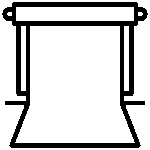 Backdrop & Support Kit
Backdrop & Support Kit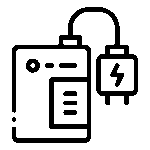 Battery & Charger
Battery & Charger Camera Bags
Camera Bags

